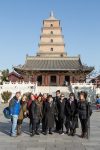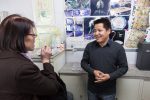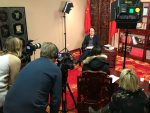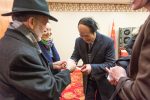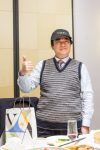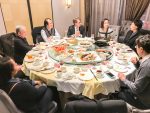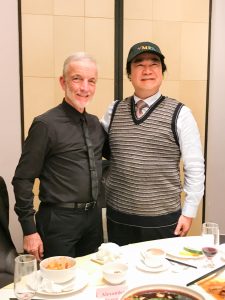 By Alex Nyerges, VMFA Director
By Alex Nyerges, VMFA Director
With a packed itinerary ahead of us, we started yesterday at the Big Wild Goose Pagoda, built during Tang Dynasty in 652, which is an important symbol of modern Xi’an culture—and a perfect place to reflect on today’s step back in time to the Qin nation.
Curating a major art museum exhibition takes a lot of research, and sometimes it means covering a lot of ground. Although we live in a digital era, nothing can replace on-site conversations and seeing the objects in person, particularly by studying them within their cultural environment, to truly understand their meaning and purpose.
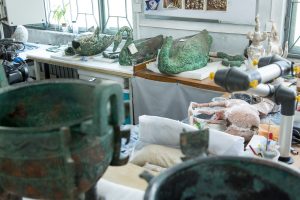
Over the past year or two, VMFA Curator Li Jian —working with co-curator Hou-mei Sung of the Cincinnati Art Museum—has traveled repeatedly to her native China, working diligently to identify the best objects and historical relics for Terracotta Army. Both VMFA’s Chief Curator Michael Taylor and I have joined her in China on several occasions to build on past relationships, establish trust with new partners, and navigate the loan process that entails sending priceless objects to the other side of the world and back again.
As a bit of background, art museum installations often are designed to reflect a theme or perhaps an artist’s evolution. What differentiates VMFA’s Terracotta Army exhibition, is that we’re using select rare artifacts and cultural objects from ancient China to tell a story about the Qin culture. Personally, I approach art as an archaeologist, so I’m constantly looking at relics to discover more about how people lived in earlier times.
Presented in three sections, Terracotta Army tells the story of how the Qin state developed into an empire under Ying Zheng, who unified China and declared himself Qin Shihuang, or the First Emperor of China. Almost immediately after he became king in 246 BC, he started his journey to immortality. His legacy certainly speaks to a lasting impact: This was a bold leader who created a revolutionary system of federal-state government operations; standards for money, writing, and measurement across the country, national highways, and much more.
Our next stop was the Shaanxi Provincial Institute of Archaeology. Established in 1958, the institute is responsible for major research of archaeological sites and excavation of the Qin artifacts, which you’ll find in museums across China. This is no small task; the institute’s sample bank includes more than 140,000 pieces dating from the Paleolithic period to the 19th century.
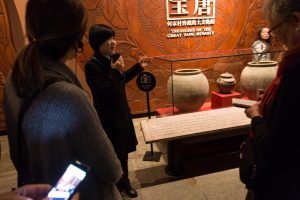 During our private tour, archaeologist Tian Yaqi gave us an unparalleled lesson on excavations at the Qin capital of Yongcheng, which was named the National Archaeological Discovery of 2016. We’re honored to be hosting him in February, when he participates in a related archaeology forum at VMFA. We were also fortunate to get an unexpected tour in the Conservation Lab with Shao an Ding, who shared details about his work on objects like the goose lent to VMFA.
During our private tour, archaeologist Tian Yaqi gave us an unparalleled lesson on excavations at the Qin capital of Yongcheng, which was named the National Archaeological Discovery of 2016. We’re honored to be hosting him in February, when he participates in a related archaeology forum at VMFA. We were also fortunate to get an unexpected tour in the Conservation Lab with Shao an Ding, who shared details about his work on objects like the goose lent to VMFA.
From there, we headed to the Shaanxi History Museum, which oversees the Shaanxi Cultural Heritage Promotion Center, a critical contact in curating our exhibition. Qiang Yue, my counterpart as director, spoke about the museum and its perspectives in shaping our understanding of Qin culture.
Our final stop of the day was a special dinner hosted by Qiang Yue and his colleagues from the Shaanxi History Museum. Our vision for this trip was to help educate local journalists about the Qin story within its native environment, and with the guidance of expert commentary and analysis. Yesterday’s lessons reminded us of the importance of collaboration and partnerships!
For additional information and exhibition tickets: Terracotta Army: Legacy of the First Emperor of China.
